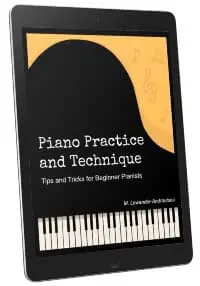- Home
- Piano Scales
- Playing Piano Scales
Playing Piano Scales with Easy Technique for Beginners
This article may contain compensated links. Please read the disclosure for more info.
Playing piano scales can be made easier with some clever strategies.
Did you think C major was the easiest scale? Then you're in for a surprise! Learn how to practice piano scales in this tutorial directed to adult beginners.
Playing Piano Scales with Ease
The technique of playing scales is simpler than you may think. But there are a couple of challenges. Here's how to fix that first.
Basically, when we play major and minor scales, we only play a combination of 2 patterns with three, vs four notes up and down the piano.
Connecting these two patterns is where one of the difficulties lay:
- Your thumb (finger 1) needs to move under the palm of your hand (thumb under movement) as smoothly as possible.
- Your wrist and arm should stay in a relaxed and balanced position moving along the keyboard sideways/horizontally (not "flopping" up and down).
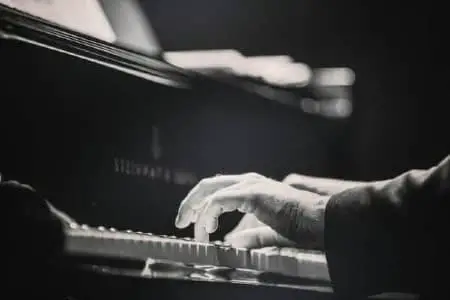
I recommend you get a Piano Scale book to keep as a reference when playing piano scales. This is a good one: The Complete Book of Scales, Chords and Arpeggios
Cupped Hand Position
Another challenge is that all fingers are not alike.
If you look at your hand stretched out in front of you, you’ll notice how all fingers are of different length and thickness.
You probably also have noticed that some fingers are easier to use than others.
Part of this problem is solved if you learn how to keep your hand in a rounded or «cupped» position, like holding a ball.
The first thing you’ll notice is when the hand is in a rounded position, is that all fingers can line up to an equal length!
 Perfect Hand Position
Perfect Hand PositionPlacing your hand in this "cupped" position on a table, you should also notice that the three middle fingers are standing on the tips, your little finger leans a tiny bit to the outer side of the tip, and the thumb rests on the side.
This «perfect hand position» gives you the possibility to use each finger with its ultimate strength and flexibility.
It is also the most correct for piano playing and especially important when playing scales for an even sound and smooth playing.
Basic Technique for Playing Piano Scales
- Practice finding the groups of 3 and 4 notes for each scale.
- Mastering the change of positions with a smooth
thumb under movement.
- You also need to sit with the correct posture, have a perfect hand posture and keep a fluid, lateral arm movement without any unnecessary movements, so that you can control the sound and evenness of your playing.
Exercises for Playing Piano Scales
The best way to start practicing scales is by playing the black keys. Yes, really!
Scales are played with finger groups of 3 and 4 fingers, using finger 1 for transition from one group to the next, and finger 5 only for stopping or turning.
So, a very easy way to begin is with the black keys since those are already organized i 2 and 3 note groups!
Exercise 1: Playing 2 and 3 Finger Groups
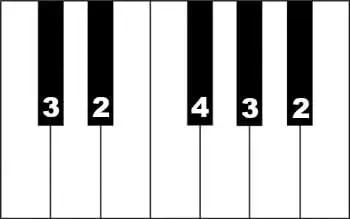 Left Hand Fingers
Left Hand Fingers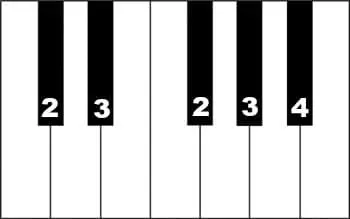 Right Hand Fingers
Right Hand Fingers- Start by playing all the groups with 2 black keys, using fingers 2 and 3. Play hands separately and both together, back and forth, all over the piano.
- Do the same with the groups of 3 black keys.
- Now combine the 2 and 3 black key groups. Play
both fast and slow.
Have fun, but remember to keep your hand «cupped» and in the correct position, and to play on your fingertips.
Exercise 2: Thumb Under Movement
- Block (play simultaneously) one group of 2 black keys. While holding them down with fingers 2 and 3, press with your thumb on the white key on each side, moving back and forth under the palm of your hand. Repeat this several times.
- Do the same with the 3 black key group. A bigger stretch for the thumb this time!
- After playing with blocked notes, play one at a time, 1-2-3-1 and 1-2-3-4-1 (with finger 1 on a white key next to each black key group).
- Practice this exercise hands separate as well as together, all over the piano. Experiment with different speed and different dynamics (loud and soft).
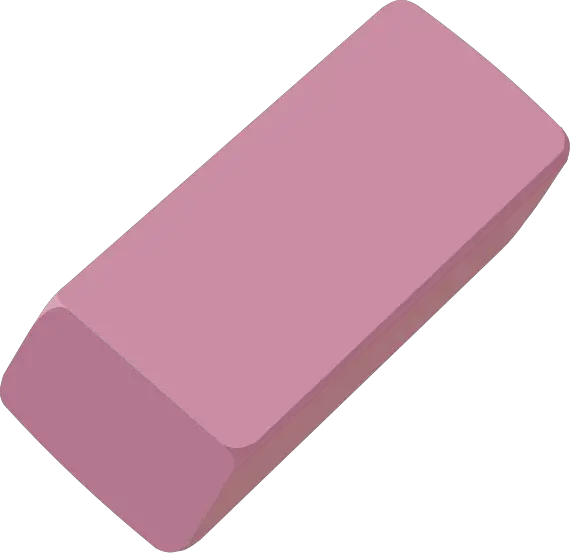 | "Test-drive" your thumb-under movement! Place a flat eraser on top of your wrist as you play. If it falls off you need to practice more to play without popping your wrist or arm up and down. If it stays- Good job! |
Practice with 3 Real Scales
Now practice the patterns you learned in 3 different major scales, B, Db (or C#) and Gb (or F#) major.
Don't worry- they're really easy!
They all use all five black keys. Practice to play the scales all over the piano, both up and down:
B major
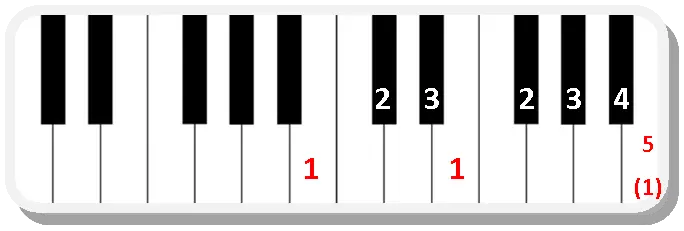 B Major Right Hand
B Major Right Hand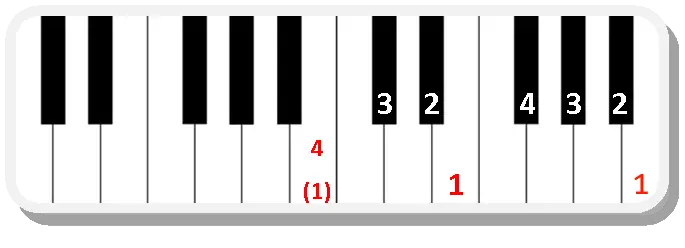 B Major Left Hand
B Major Left HandD-Flat Major
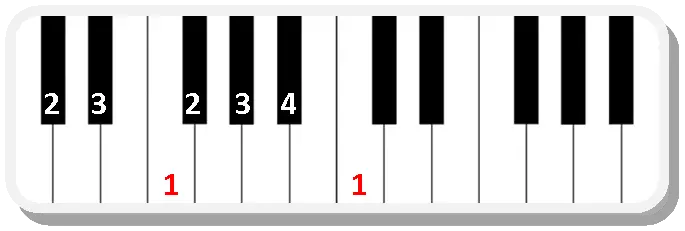 Db Major Right Hand
Db Major Right Hand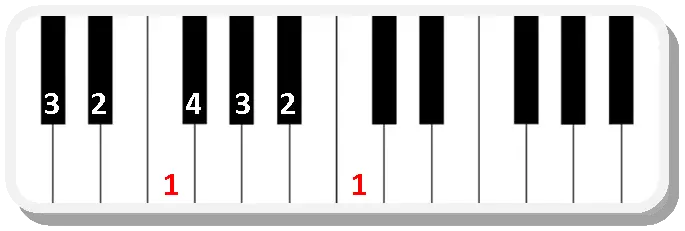 Db Major Left Hand
Db Major Left HandG-Flat Major
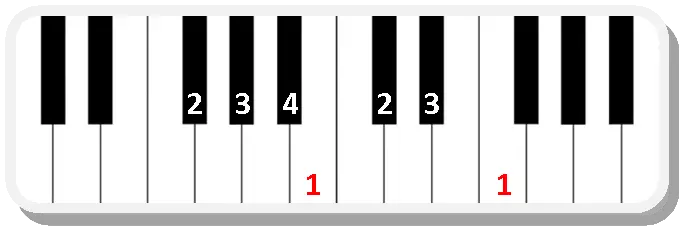 Gb Major Right Hand
Gb Major Right Hand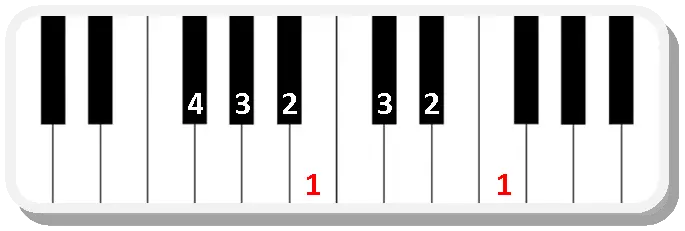 Gb Major Left Hand
Gb Major Left HandHah! Perhaps you thought you should start playing piano scales with C major, didn’t you?
The C major scale may be easier to read, but the scales you just learned are actually easier to play technically!





